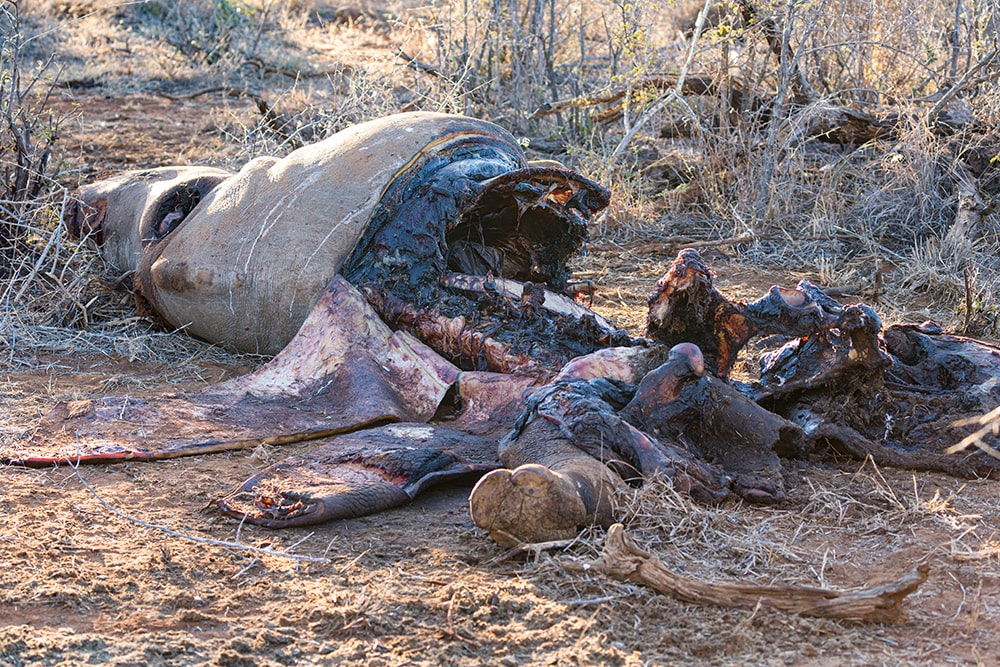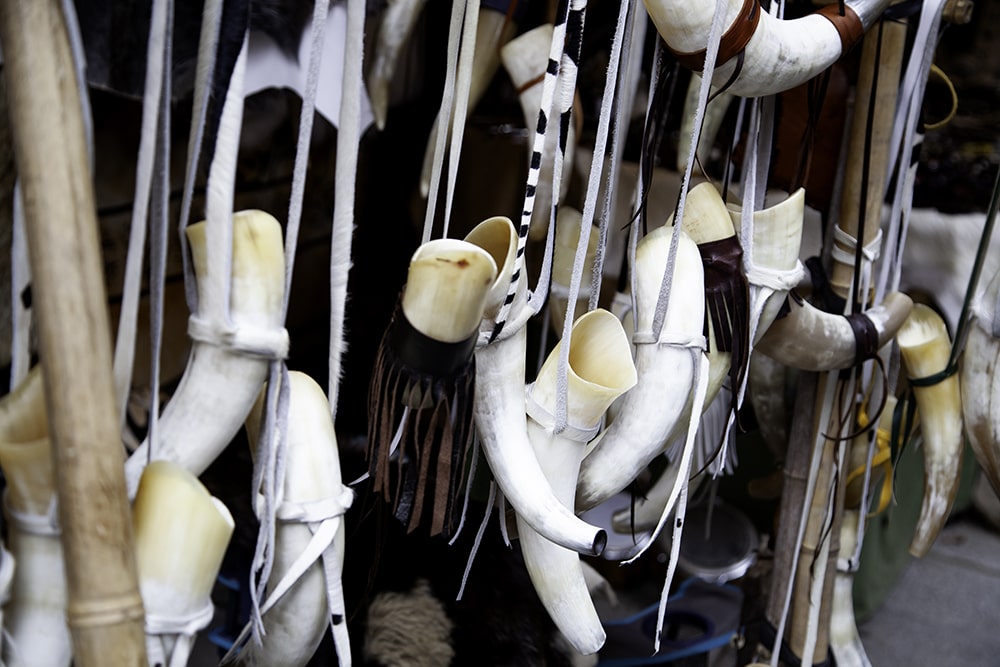Poaching is a lucrative business. For the African continent alone, poaching generates revenues estimated at a few hundred million dollars per year! So, the next obvious question is how to stop poaching in Africa.
First off, before getting into the thick of things, what is poaching? Poaching is the illegal hunting and killing of wild animals for their body parts, which are sold on the black market for a high profit.
Many conservationists have referred to poaching as being a wildlife crime.
How to tackle the poaching problem? Poaching is part of a very well-organized trade network of body parts, controlled by crime syndicates with possible links to terrorist networks.
It is amongst the top 5 worldwide “illegal business” that also includes drugs, firearms, and human trafficking!
Poaching Crisis in Africa
Poaching is at a record high in Africa. Many animals are butchered for their body parts and including:
- The rhinoceros for their horns.
- The elephant for its ivory tusks.
- The antelopes (kudu, eland, and impala) for the bushmeat.

To illustrate the poaching crisis, let’s take the case of the elephant. The elephant is on the IUCN Red List of Threatened Species and listed as vulnerable. The number of elephants remaining in Africa is estimated to be around 500,000.
Even though the CITES (Convention on International Trade in Endangered Species) was banned in 1989, the international trade of ivory, had no deterrent effect on poachers.
Now, you might be wondering who is buying all this ivory. Well, most of the ivory goes to China, which corresponds to about 70%. The price can reach up to 1,000 USD per pound (2,200 USD/kg)! The ivory is used to make jewelry, trinkets, and religious figurines.
Do you know how many elephants in Africa are killed each day by poachers to fulfill the high demand for ivory? Well, the number is mind-blowing and reaches roughly 100 per day! At this rate, the elephant will become extinct in the next 50 years if nothing is done to stop the massacre!

So, let’s take a look at how the international anti-poaching organizations and African governments are cracking down on poachers.
Anti-Poaching Organizations
World Wildlife Fund (WWF)
The plan of action of the WWF to counteract poaching includes:
- Education of local communities about the detrimental effects of poaching on wildlife.
- Raising general public awareness.
Furthermore, the WWF also helps many African countries to put in place and enforce tougher laws against poaching.
International Anti-Poaching Foundation (IAPF)
The IAPF is a non-profit organization founded in 2009 by Damien Mander. The focus of the IAPF is to prevent poaching on the African continent through:
- Ranger training.
- Conduct anti-poaching operations.
- The use of technology to monitor wildlife.
Wildlife Conservation Programs
Many African countries have implemented over the years, various wildlife conservation programs. The goals of these programs are as follows:
- Protection of the wildlife habitat.
- Protection of endangered species from extinction.
- Education and raising awareness about the adverse effect of poaching practices.
The primary source of revenue for conservation efforts comes from sports hunting. To further add to the controversy, endangered species like the black rhinoceros are killed to help finance the wildlife conservation program!
Many African governments claim that the most efficient tool at their disposal to fund wildlife conservation is sports hunting.
The money raised through sports hunting is used to:
- Train and hire more rangers.
- Create an anti-poaching unit to crack down on poachers.
- Monitor wildlife.
Keep in mind that wildlife is roaming within a vast territory. So even with more trained rangers and anti-poaching units, the use of technology is a must to deter poaching practices.
Use of Technology: GPS and Drones
Nowadays, poachers are using technological tools to track down animals. So why not use the same technology for wildlife conservation efforts?
One tool used for monitoring the wildlife is the GPS collar, enabling researchers as well as rangers to observe the wildlife movement.
Another high-tech tool is Unmanned Aerial Vehicles (UAVs) commonly known as drones. The usage of drones to monitor wildlife has increased in recent years. Drones enable you to cover a vast region in a shorter time, and more swiftly than rangers patrol would be able to.
In 2012, the IAPF created anti-poaching units that use drones. The presence of drones surveying the protected areas has a deterrent effect on poachers. They tend to avoid the areas patrolled by drones!
Back to the Basics: Ink and Poison!
Poachers go to great lengths to get their hands on their trophies, such as the rhino horns. Therefore, one way to help protect the rhinoceros is to alter the horns by making them utterly worthless!
The use of poison and indelible ink is an alternative to high-tech tools in the fight against poaching. The procedure is quite simple. A mixture of poison and ink is injected into the rhino horns. It is harmless to the rhinoceros since the mix doesn’t enter the bloodstream.
The ink stains the inside of the horns. Therefore, the poachers are totally clueless about the quality of the horns they are about to collect. So, the question becomes, why take the risk of killing the rhinoceros and end up with worthless horns?
The poison used is an anti-tick medication. If ingested, this poison will cause nausea and vomiting, but it’s not lethal. The reasoning behind this is to deter consumers from getting rhino horns because of the risk of poisoning.
However, these methods to stop poaching are ineffective.
Here are the five top reasons why:
- Poachers could not care less that the horns may have been poisoned, and perhaps make someone sick. They will not mention this fact to their potential buyers to get a good price for the horns.
- The ink injected into the horn tends to stay localized to the injection site. So, the poachers can easily remove the stained area and grind the rest of the rhino horn to make a powder, and sell it for medicinal purposes.
- Rhinoceros horns are often sold as ornaments. Because the ink and the poison are inside the horn, this will not act as a deterrent from buying the horn!
- Most of the consumers are unaware that the horns may contain poison. There have been no reports so far, of individuals that got sick after consuming product derivatives from rhino horns!
- The use of poison and ink to alter the rhino horns could have an impact on the price. In fact, buyers might request rhino horns that are free of ink and poison and be willing to pay a higher price to get them!
Legal Trade of Rhino Horns as a Deterrent Against Poaching?
Another option to counteract poaching is to legalize the trade of rhino horns!
The rhinoceroses’ horn is a renewable resource. So, if you cut the horns, they will regrow.
Therefore, if you legalize the trade of rhino horns instead of slaughtering the rhinoceros for their horns, you will be able to harvest them in a controlled environment, and without harming the rhinoceros.
Thus, the increased availability on the market of rhino horns would cause a dramatic drop in the price. There would be no more financial incentive for poachers to kill a rhinoceros since the profit margin will be significantly lessened.
Use of Science: The DNA Signature
Let’s face it, the resources available to fight against poaching are limited. So, the efforts must be focused on poaching hotspots! Now, how to find them? By using science, of course!
Nowadays, one very useful tool at the disposal of conservationists is the DNA database! Now, you might be wondering how a DNA database can help with the anti-poaching effort? Well, let me explain.
A zoologist, Dr. Samuel Wasser from the University of Washington built a DNA database for the African elephants. He found a genetic signature that can be used for identifying the elephant’s population.
Now, when a shipment of ivory tusks is seized, the material is analyzed and compared against the database to determine the origin of the tusks.
There are two hotspots from which most of the ivory tusks on the black market are coming. The first one is in Tanzania near Mozambique’s border. The second one includes parts of Gabon, the Republic of Congo, and Cameroon. Because of the DNA database, the anti-poaching efforts can be focused on those problematic regions.
Furthermore, DNA analysis can be used as evidence to help prosecutors build a case against poachers and ensure a conviction.
My Final Thoughts
Poaching is indeed a very lucrative business that generates a worldwide revenue estimated at 10 billion each year! This illegal trade network is well structured and run by crime syndicates.
To effectively fight to poach, you need to tackle the issue on more than one front. The involvement of the WWF and the IAPF plays a significant role in raising public awareness.
With the help of science and technology, prosecutors can build stronger cases with more incriminating evidence and get a conviction. However, tougher laws, as well as punishments need to be in place to discourage poaching practices.
Drones are used to monitor African wildlife and help protect endangered species. Still, drones are mostly used for recreational purposes.
Therefore, not only wildlife conservationists can pilot a drone but you can too! If you are interested in learning more about drones, read my full review here.
If you have any questions about the poaching crisis in Africa, please leave a comment below. I will get back to you.
Thank you for such an important article. It’s disturbing and saddens me that people are killing animals for profit. I never dreamed that poaching was a $10 Billion industry.
Frankly, I’m overwhelmed at the thought that organized crime is instrumental. What is wrong with the human species that we are driven to kill every living thing on the planet?
What I find most alarming is the links to the terrorist organizations. Unfortunately, greed is the driving force behind poaching.
And in order to stop poaching in Africa or worldwide for that matter, it has to be concerted efforts between the government of different countries and the general public!
Otherwise, many animals are at high risk to become extinct in our lifetime as a result of poaching!